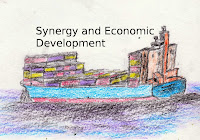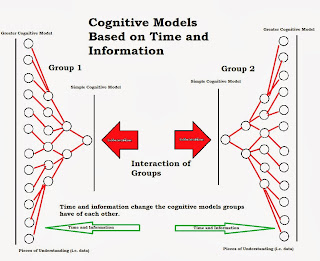The
authors Ha and Swales (2012) attempt to determine the single-region
IO analysis of a stylized export-base model. They
found that improvements in value-added efficiencies also improve upon the GNP
of countries and the labor market. There were also regional improvements in
exportation which helped to sustain growth.
Exports
are the underpinning of strong economic activity. The export-base model is a
simplified version of the Keynesian demand-driven approach whereby exports and
regional productivity are linked. As market demand increases
so does the need to produce more products for export. This in turn can increase
economic activity to meet market demands.
Generally, when policy makers
want to increase exports in the export-based model they introduce and spend
money on the port and other export functionality. It is hoped that by
reducing the costs through investments that it will make exportation cheaper
and encourage more use of the facilities. This has a positive effect but can be
limited if the internal regional mechanics are not improved for greater
competition.
Exports have an impact on the
region. Furthermore, they can also influence surrounding areas that contribute
to the exportation of products. There is a separation between domestic
production and export production. Export production being that which is sold to
other markets while domestic production serves the needs of locals. At times
these are blended together because they relate to each other.
Increases in efficiency also
increase other areas of the sector. There is a cross-breeding that creates
higher levels of adaptation within the market. In turn, increased value-added
efficiencies also improved the Scottish Gross National Product. As companies
produced more efficient products that were demand laden in the market the
wealth of the region increased.
Improvements in the exporting of
products are also not the only benefit. The local economy also improves through
growth within the labor market. The fundamental aspects of the economy improve
through the creation of stronger efficiencies, value-added products, improved
exportation, and general employment opportunities.
To further the reports findings, GNP
improvements can be fostered through improvements such as deep sea ports that
help to create efficiencies in exportation. Yet, in alignment with the report,
true improvement is outside massive spending and instead lies in the efficient development of new products and services that improve upon market principles. These improvements enhance the labor market, bring more relevant products to the international
market, and create stronger regional growth. Through rejuvenated products and services comes growth.
The simple Keynesian model used
to do similar analysis is as follows:
AD=C+I+G+(X-M)
C=Consumer Spending
I=Investment
G=Government Spending
X-M=Exports minus Imports.
In the model when a shock has occurred
government can increase spending to improve other areas. The problem with prolonged
government spending is that it throws the equilibrium out of balance as that
spending must either be paid for by increasing taxes or increasing debt. It is better, at least in the long-run, to
improve upon the market principles of creating more relevant value-laden
products and services for exportation. Improved exportation improves upon the
fundamentals of the local economy, improves labor opportunities, increases tax
revenues through expanded economic activity, and develop higher levels of
sustainable growth. Where government does wish to spur activities it should
focus on those areas where it improves upon efficiency for multiple industries
such as ports, collaborative development, infrastructure, improved market
information, market hubs, drawing foreign investment, educational improvements
for labor/innovation development, etc. It is important to remember that government spending and influence should be to improve upon the economic fundamentals and the environment versus short-term purchasing of inefficient economic activity.
Ha,
S. & Swales, K. (2012). The export-base model with supply-side stimulus to
the export sector. Annals of Regional
Science, 49 (2).




